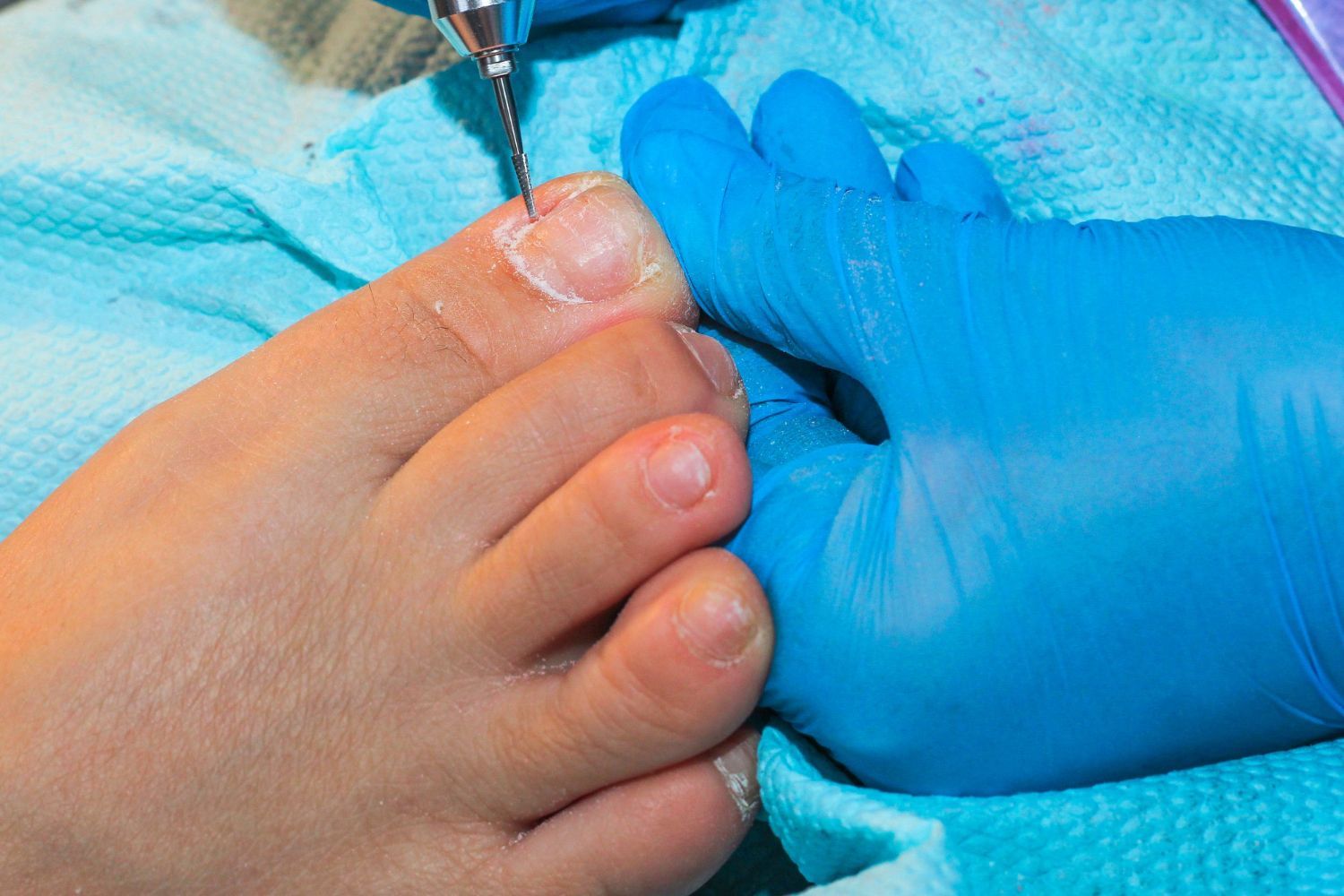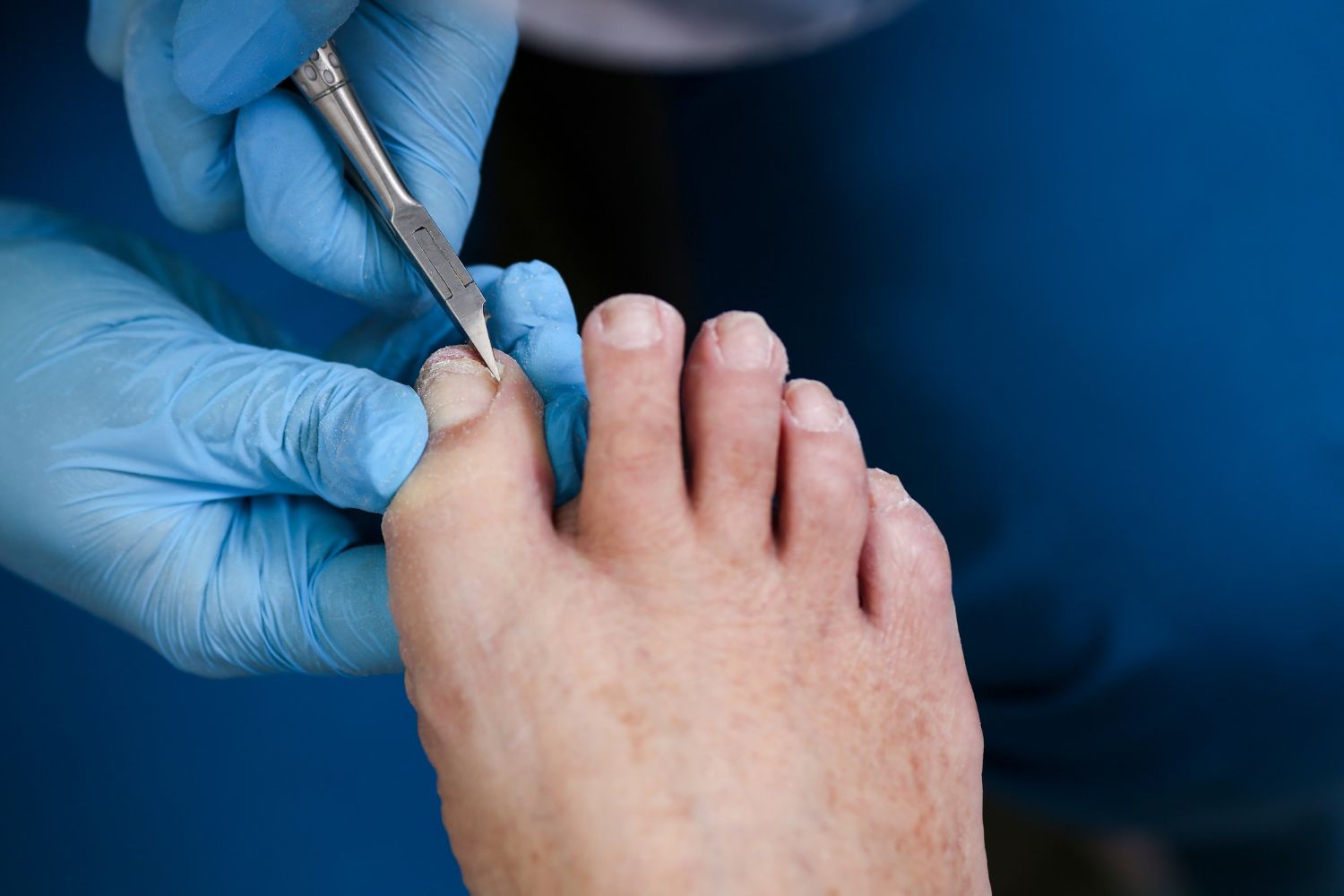Ingrowing Toenail
An ingrowing toenail can be a cause of severe debilitating pain in the foot.
Ingrowing Toenails
It may affect your choice of footwear or prevent you from partaking in your favourite pastime or activity or just prevent you from being pain free.
An ingrowing toenail occurs when a piece of the nail pushes into the skin and causes pain. A true ingrowing toenail will pierce the skin and flesh of the toe, resulting in pain, redness, swelling and infection, possibly with bleeding and pus present too.
The nail does not have to pierce the skin in order to cause pain. The nail can change shape and become more curved and push down on the skin without breaking it.
This is called an involuted nail.


Next we dress the toe, run through the post-operative instructions and book your redressing appointment which is normally within 3-7 days.
For the rest of the day we expect you to sit with your foot up. You will need to keep the dressing on and dry until we see you back for your redressing appointment. Initially the first dressing can be quite bulky, which may mean you cannot get your work shoes on. This may require you to have a few days off work.
At the redressing appointment, we will review the dressing, evaluate the toe and assess healing.
We will then redress it again and you will be given further dressing advice to do this at home yourself. You will need to keep it covered for approximately 6 weeks in total.
Possible but rare complications of nail surgery include:
Regrowth of the offending piece of nail, approximately 5-10% chance.
Infection 2.5%
Delayed healing- Occasionally it may take longer than 6 weeks to heal.
Allergic reaction
Poor Cosmesis- You may not like how it looks
You may develop a new toe or nail problem.
Continued pain- It's possible you may still have some pain in your toe.
You may need further treatment.
Our clinical lead podiatrist, David Reid has performed over 800 successful nail surgeries!
We can perform surgery on self paying patients or we are registered with BUPA and WPA to carry out the surgery for you.
Ingrowing Toenail Surgery
Recurrent ingrowing toenails require permanently removal of the offending piece of nail or regular ongoing routine podiatry. We would recommend surgical removal as the gold standard in the majority of cases.
We would require an Initial Appointment in order to assess the ingrowing toenail and your medical history. We will advise you of all the possible treatment options and recommend which is likely to give you the best possible outcome.
If we agree that surgery is the best option, we will then book you in at a convenient time for you to have the painful piece of nail removed.
Depending on your symptoms, the shape of your nail and your medical history and occupation we may recommend removing one side of the nail, both sides of the nail or the whole toenail. This will be fully discussed with you and the best procedure for you will be recommended. We offer surgery under local anaesthesia and we use chemical ablation of the nail bed so there is no requirement for stitches.
On the day of surgery, we will complete the paperwork and consent form and then give you a small anaesthetic injection either side of the offending toe. Once your toe is numb, we will clean the area and apply a tourniquet to the toe, to ensure there is no bleeding. We will then remove either the side/s or the entirety of the problematic toenail as discussed.
Once this is removed we then apply a small amount of a chemical called phenol which burns the cells that grow the nail. This stops the offending piece of nail growing back.
